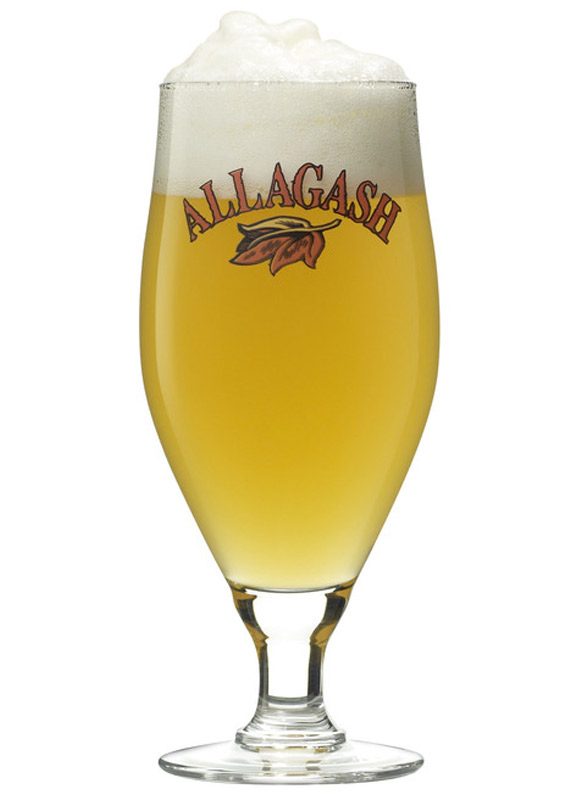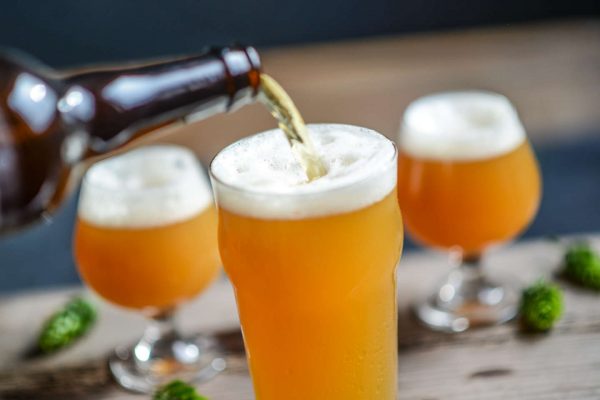
Allagash Brewing Co. founder Rob Tod had an affinity for Belgian beers in the early ’90s but the trouble was, they weren’t being brewed by American craft breweries. Tod took matters into his own hands, opened Allagash in Portland, Maine, in 1995 and began brewing Allagash White, a delicious Belgian witbier, which quickly became one of their most popular offerings to date.
We caught up with Allagash Brewmaster Jason Perkins and asked him to provide some tips on how to brew a better witbier. Here are five things to remember when pursuing an Allagash White-caliber wit.
 1. Use Light Colored Malts
1. Use Light Colored Malts
The name “white” or “wit” comes from the unique white, cloudy appearance of this Belgian-style beer. Use base malt with color below 2.0° L. Using darker colored base malt can turn a witbier’s appearance into something akin to pond water.
2. Select the Ideal Yeast
Of all the tips, selecting the perfect yeast is the most important. The unique esters that the right yeast provides are the cornerstone of a good witbier. Simply using malt and spices alone will not produce a quality Belgian wheat beer. The following yeast strains are recommended:
- Wyeast 3942 – Belgian Wheat
- Wyeast 3944 – Belgian Witbier
- Wyeast 3463 – Forbidden Fruit
- White Labs WLP400 – Belgian Wit
- White Labs WLP410 – Belgian Wit II
- Brewing Science Institute B-42 – Essens Wheat
- Brewing Science Institute B-44 – Belgian Wit
Yeast is not only a critical component of flavor, but also appearance. Serving witbiers with yeast gives it that signature haziness. Consider packaging with yeast, but not too much! You don’t want a bottle/keg of mud.
3. Include Oats in the Grain Bill
Consider using oats as a portion of your grain bill. Oats will provide a silky mouth feel to witbier, which can really enhance the overall profile of the beer.
4. Go Easy On the Spices
While a spicy profile is a hallmark of witbier, it is important to keep in mind you are brewing a beer, not making curry! Coriander is an important ingredient in the witbier style, but it needs to be a piece of the flavor pie, not the whole thing. Select quality whole-seed coriander and crush it on brewday. The citrus components of coriander are much more pleasant when freshly ground. Use about 1-2 grams per gallon of beer.
Witbiers are also traditionally made with Curacao bitter orange. While you can use sweet orange peel, we find that the citrus component becomes too dominant.
And you can always add in other spices. Why? Because it’s fun and unique! Cumin, chamomile tea and cardamom are all possibilities. Our special spice addition is a secret!
5. Allow Fermentation Temperatures to Rise
Most of the yeast strains mentioned in tip #2 above prefer a rising temperature profile during fermentation. While this can be difficult for some homebrewers, it is advisable to start the fermentation around 62-65°F (16.7-18.3°C ) and allow the temperature to slowly rise to 70-75°F (21.1-23.9°C) by the end of fermentation.



Share Post